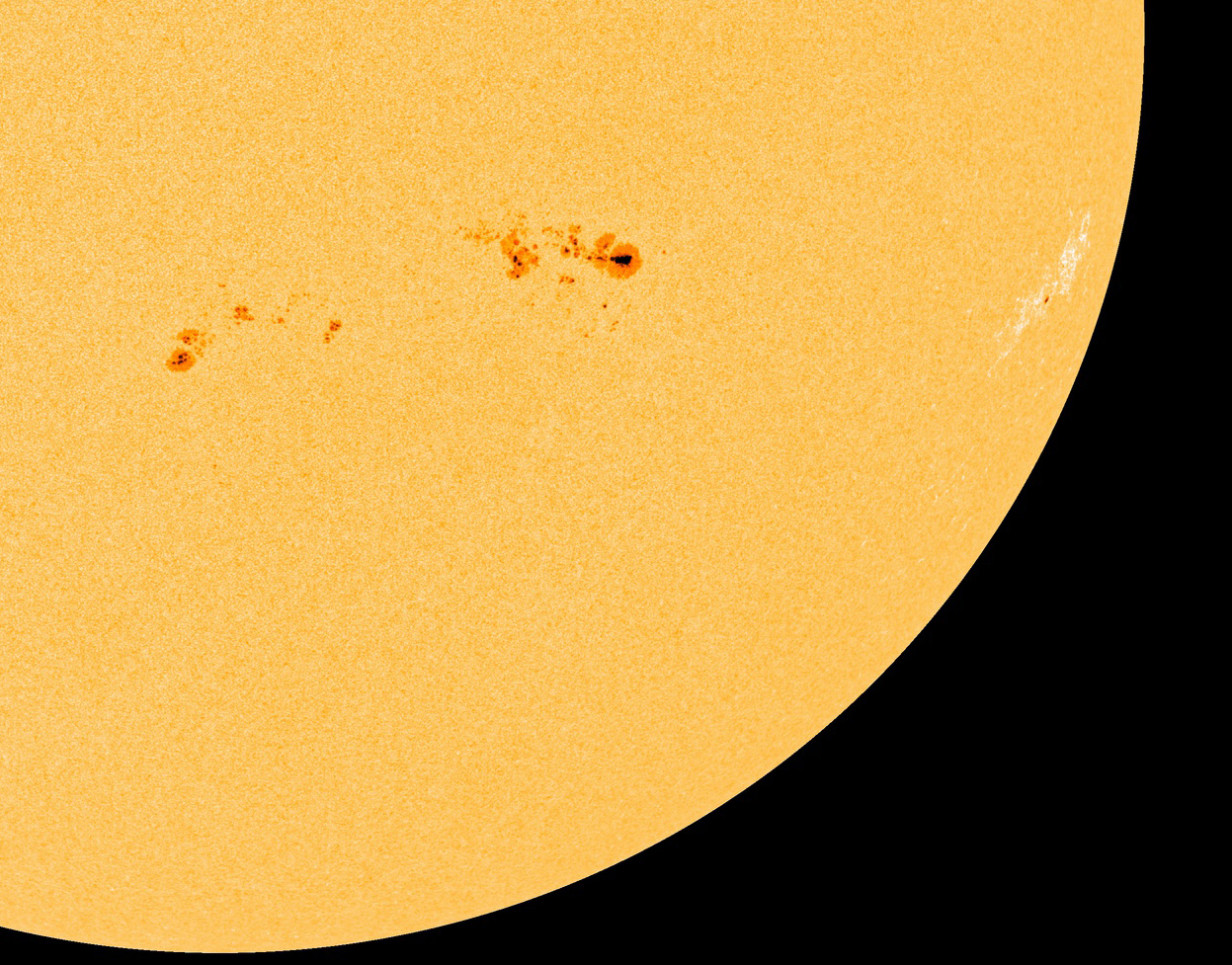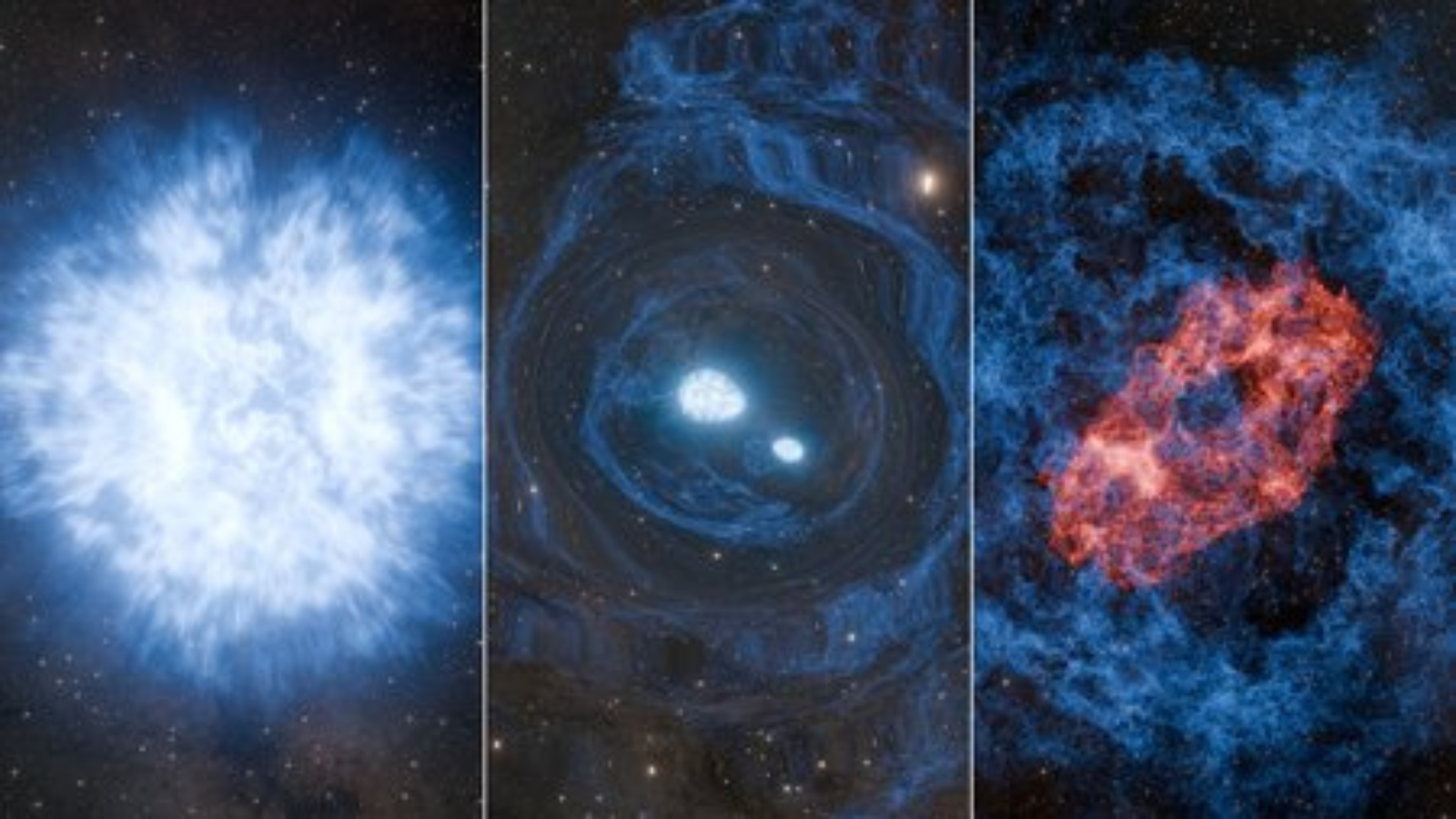Huge Sunspot Facing the Earth: Watch It Live Today

Editor's Note: Today's live webcast of the sun has been delayed one hour to 2 p.m. EDT (1800 GMT) due to cloud cover at the observing site.
A huge sunspot 11 times the size of Earth is facing our planet now and you can see live telescope views of the solar behemoth in a skywatching webcast today.
The giant sunspot AR1785 will star in a free webcast by the online skywatching website Slooh Space Camera Tuesday (July 9) at 2 p.m. EDT (1800 GMT) and last about 25 minutes.
You can watch the sunspot webcast live on SPACE.com, courtesy of Slooh.
"Slooh Space Camera will take viewers on a wild ride as we take a close-up view of this gigantic sunspot from a world class solar observatory in Arizona," Slooh officials wrote in an announcement. "AR1785 may pose a threat to Earth if a solar flare ignites while pointed at Earth."
Slooh officials will use a solar telescope at Prescott Observatory in Arizona to safely observe the sunspot. You can also watch the webcast from Slooh's website directly here: http://www.slooh.com.
WARNING: Never stare at the sun through binoculars, a telescope or the unaided eye without safety precautions. Serious eye damage or blindness can result. Scientists use telescopes equipped with special filters to safely observe the sun.
Breaking space news, the latest updates on rocket launches, skywatching events and more!
So far, sunspot AR1785 and another nearby active region called AR1787 have remained relatively quiet in terms of space weather. On Monday (July 8), space weather forecasters had predicted a 55-percent chance of medium-strength M-class solar flares and a 10-percent chance of powerful X-flares, the strongest type of flares the sun can unleash.
"Despite the fact that both sunspots have unstable magnetic fields laden with energy for strong flares, solar activity remains low," astronomer Tony Phillips of Spaceweather.com wrote in an update today.
The sun is currently in an active phase of its 11-year solar weather cycle and is expected to reach its peak activity later this year. The sun's current weather cycle is known as Solar Cycle 24.
Email Tariq Malik at tmalik@space.com or follow him @tariqjmalik and Google+. Follow us @Spacedotcom, Facebook and Google+. Original article on SPACE.com.

Tariq is the award-winning Editor-in-Chief of Space.com and joined the team in 2001. He covers human spaceflight, as well as skywatching and entertainment. He became Space.com's Editor-in-Chief in 2019. Before joining Space.com, Tariq was a staff reporter for The Los Angeles Times covering education and city beats in La Habra, Fullerton and Huntington Beach. He's a recipient of the 2022 Harry Kolcum Award for excellence in space reporting and the 2025 Space Pioneer Award from the National Space Society. He is an Eagle Scout and Space Camp alum with journalism degrees from the USC and NYU. You can find Tariq at Space.com and as the co-host to the This Week In Space podcast on the TWiT network. To see his latest project, you can follow Tariq on Twitter @tariqjmalik.
